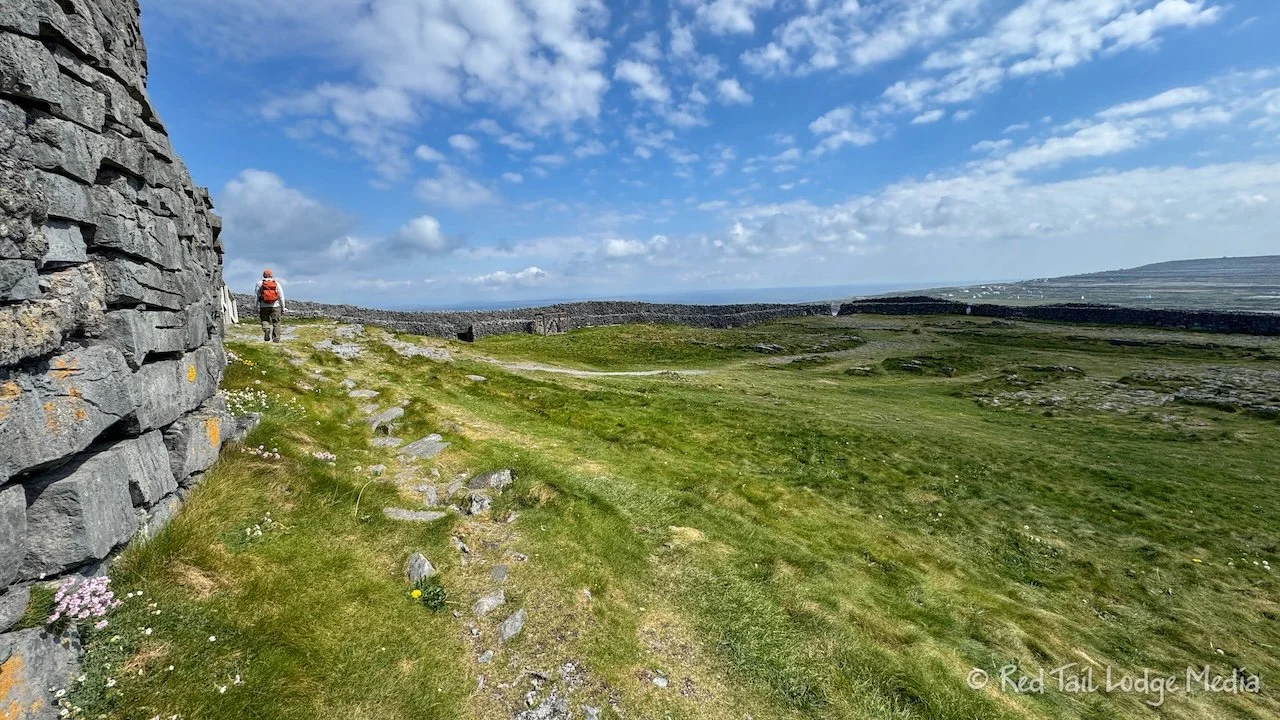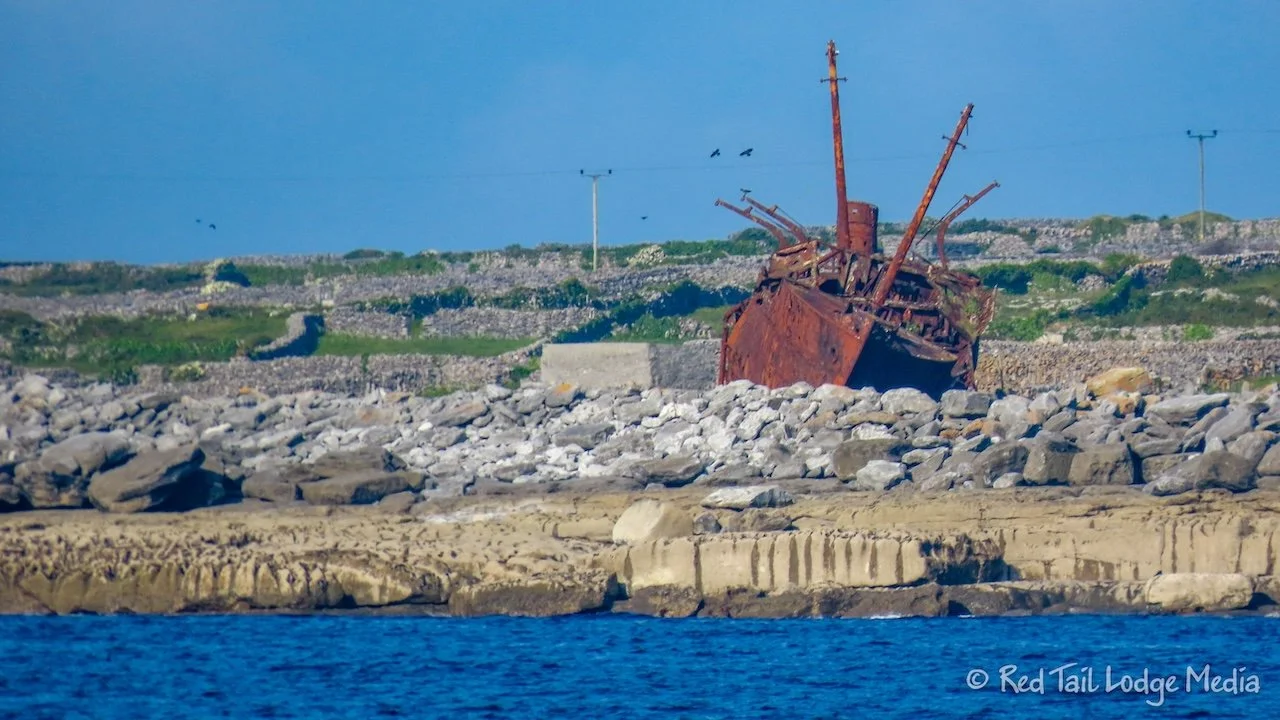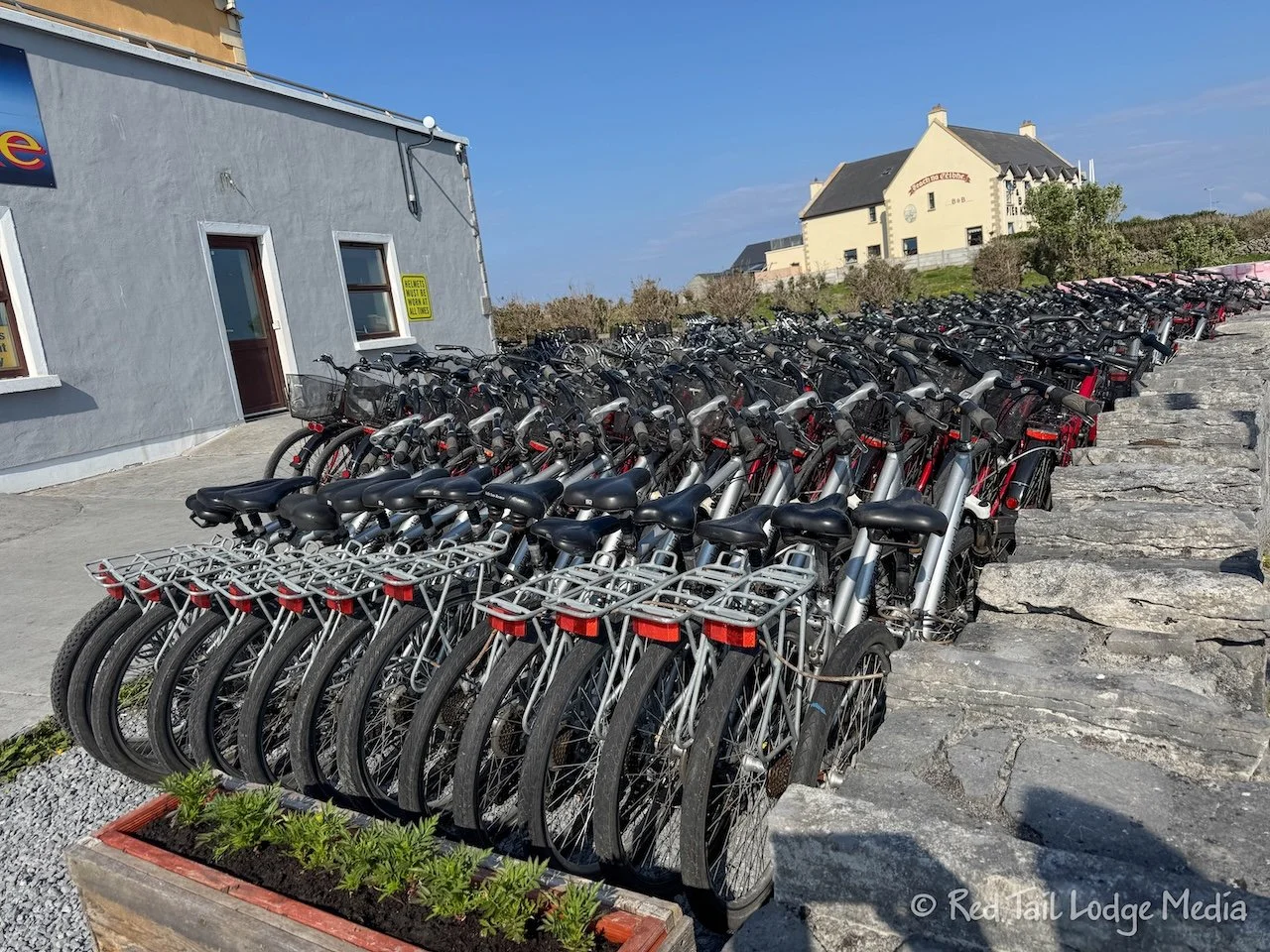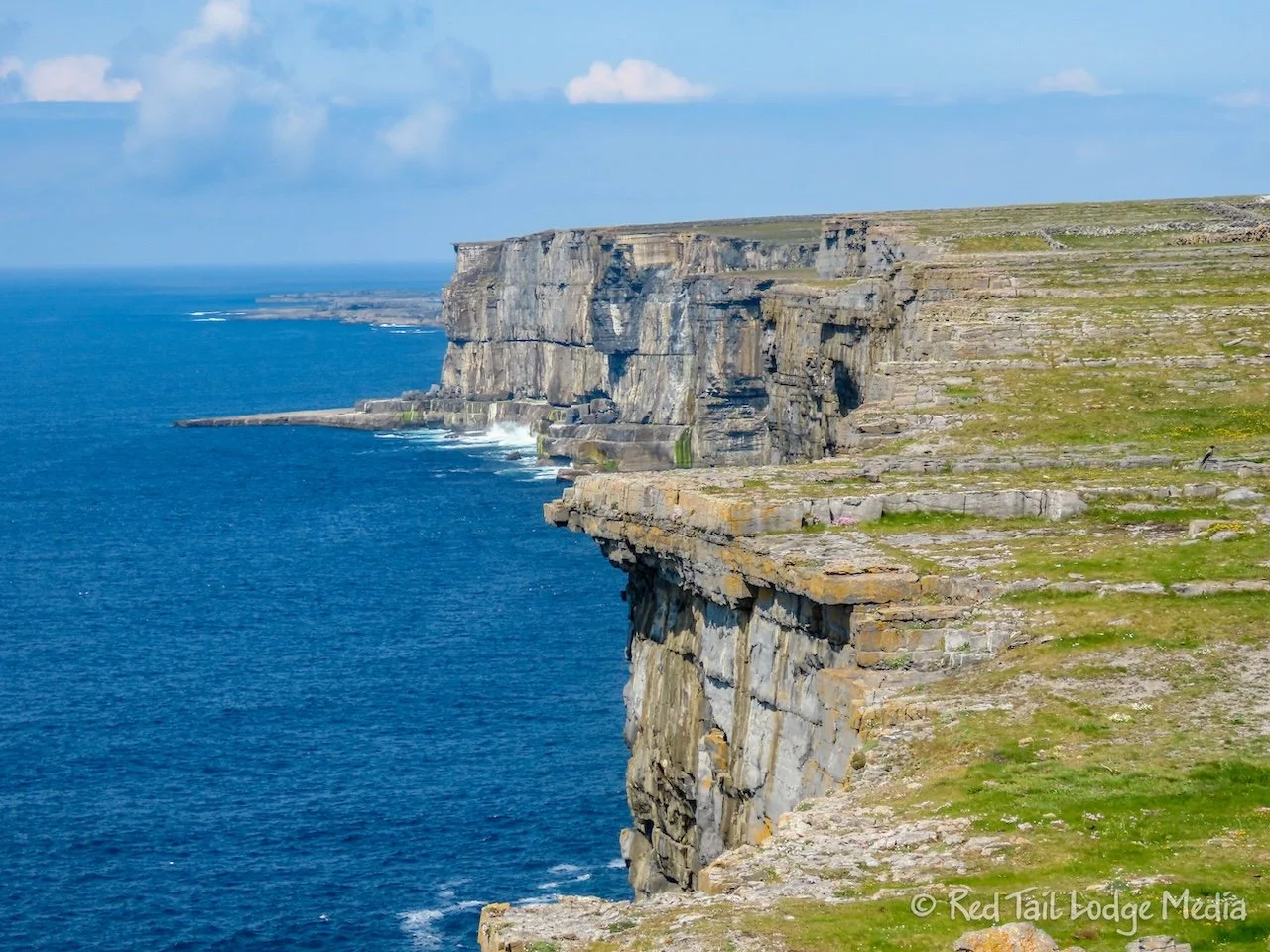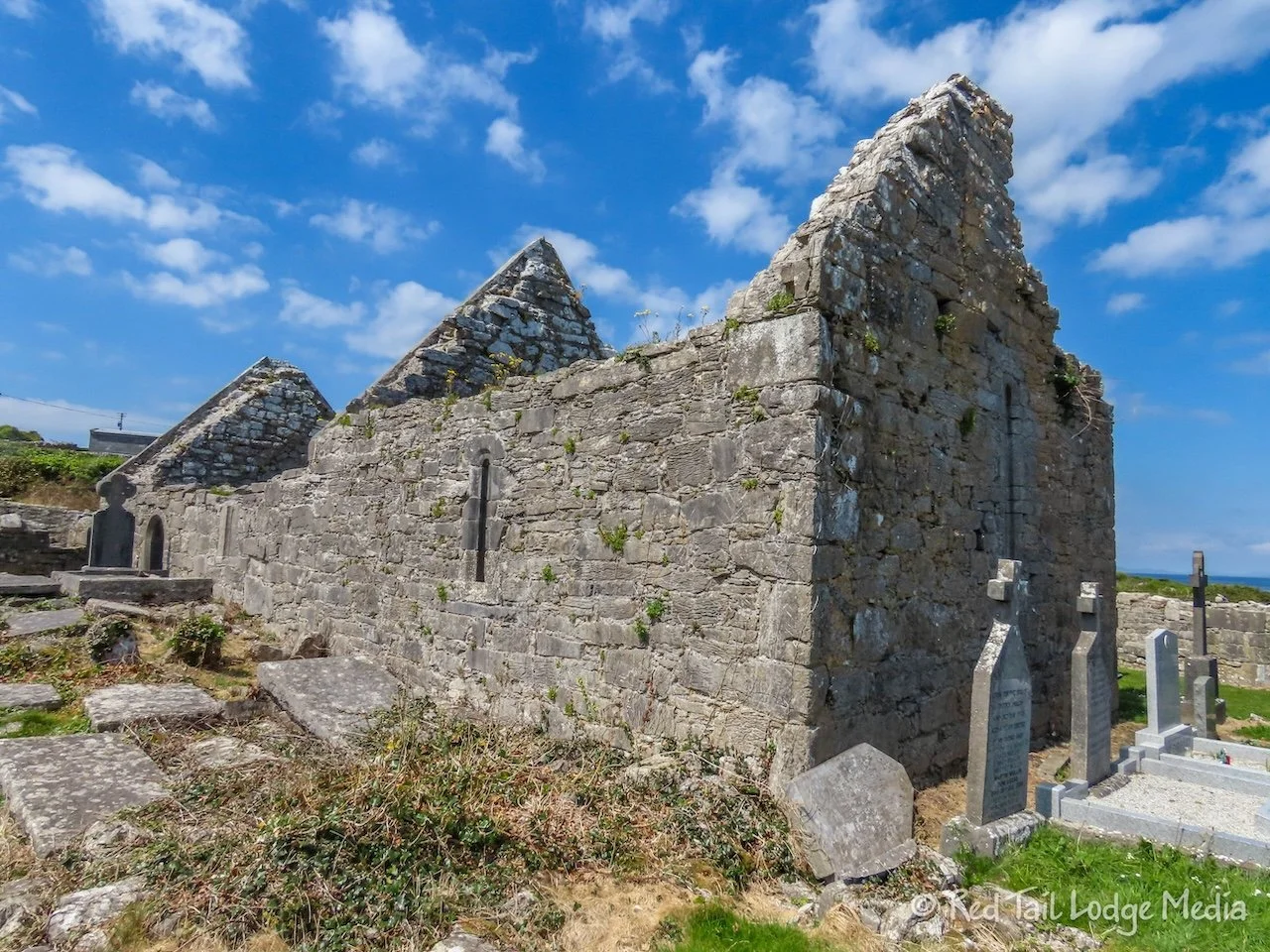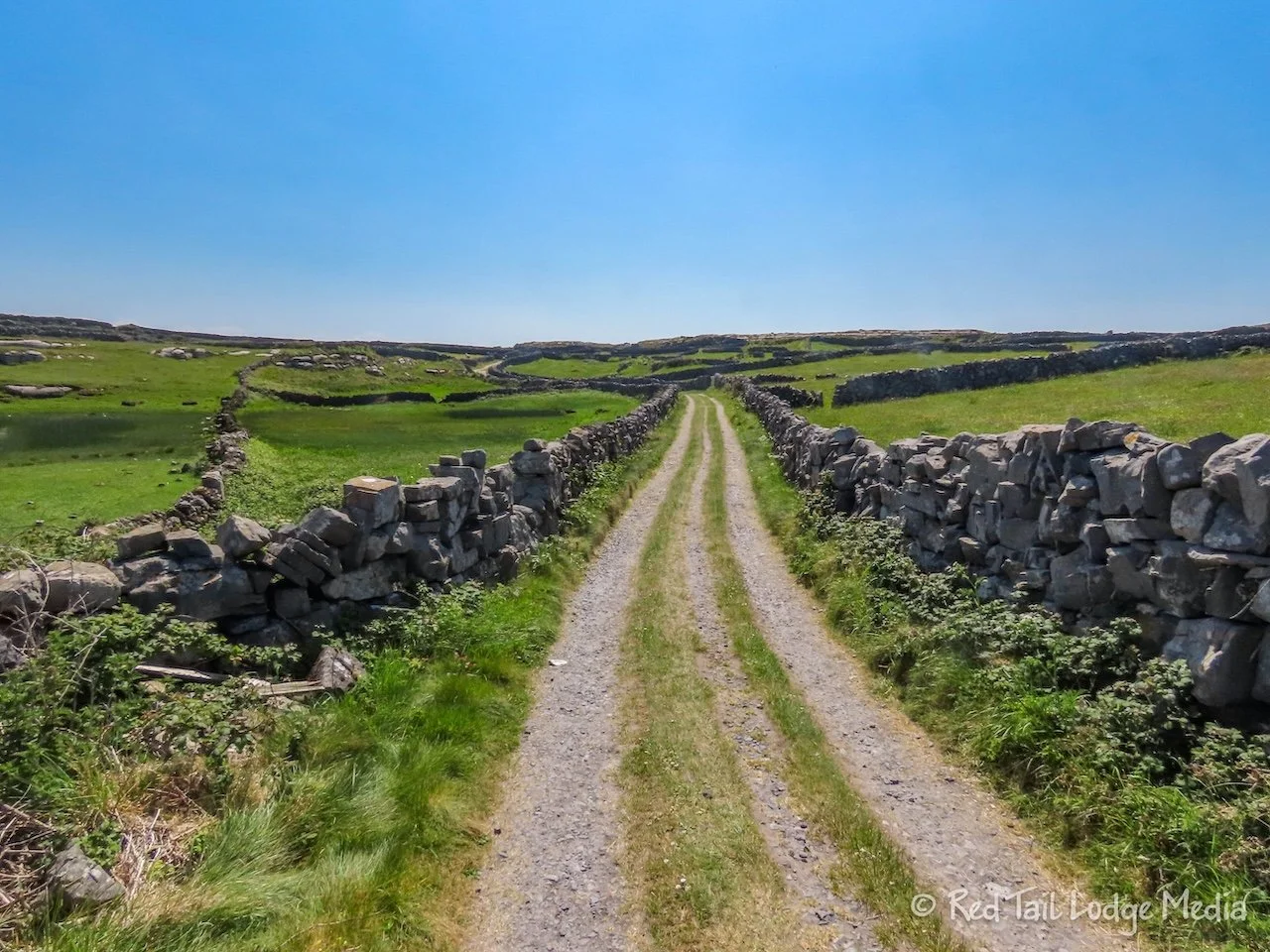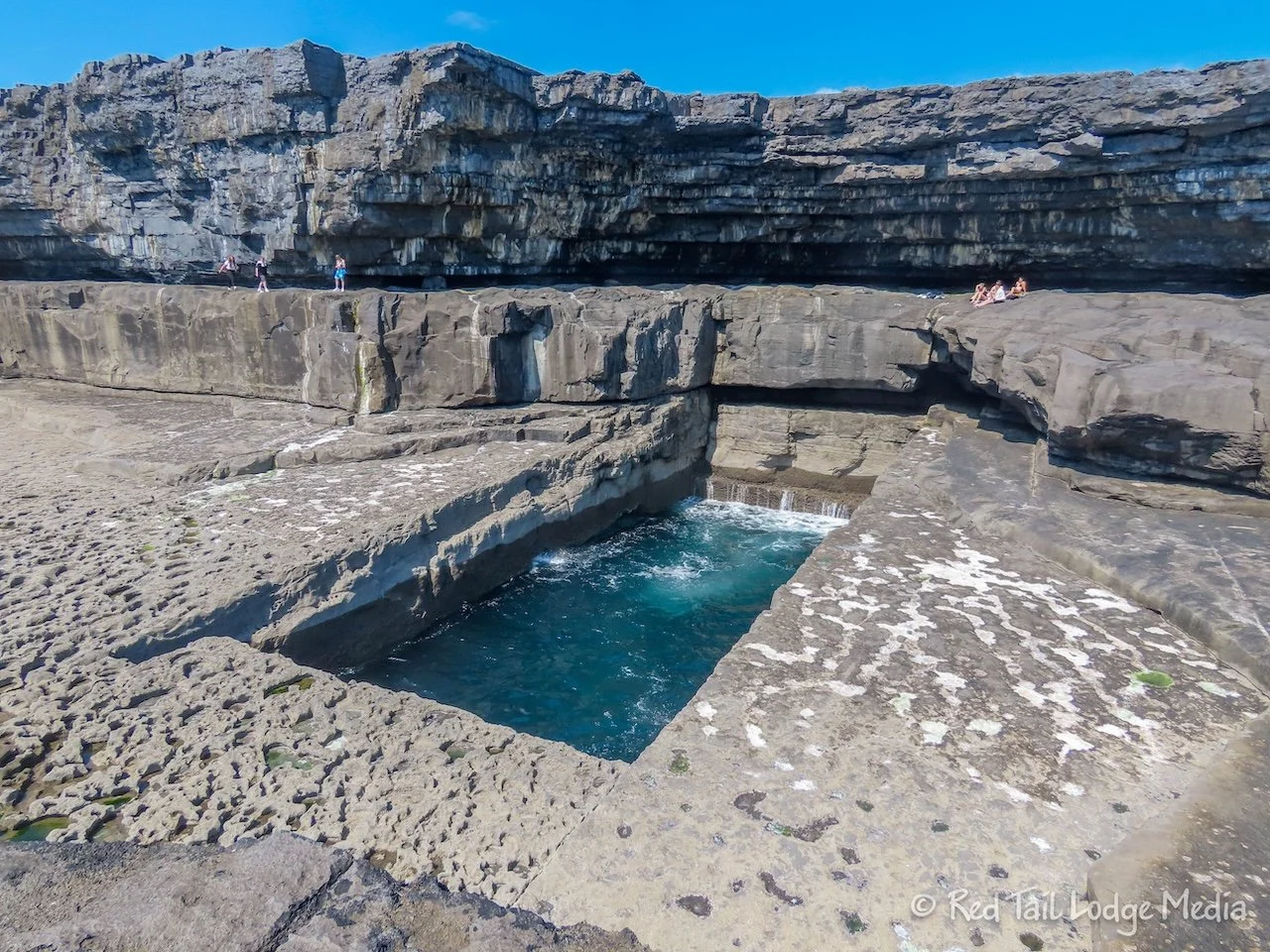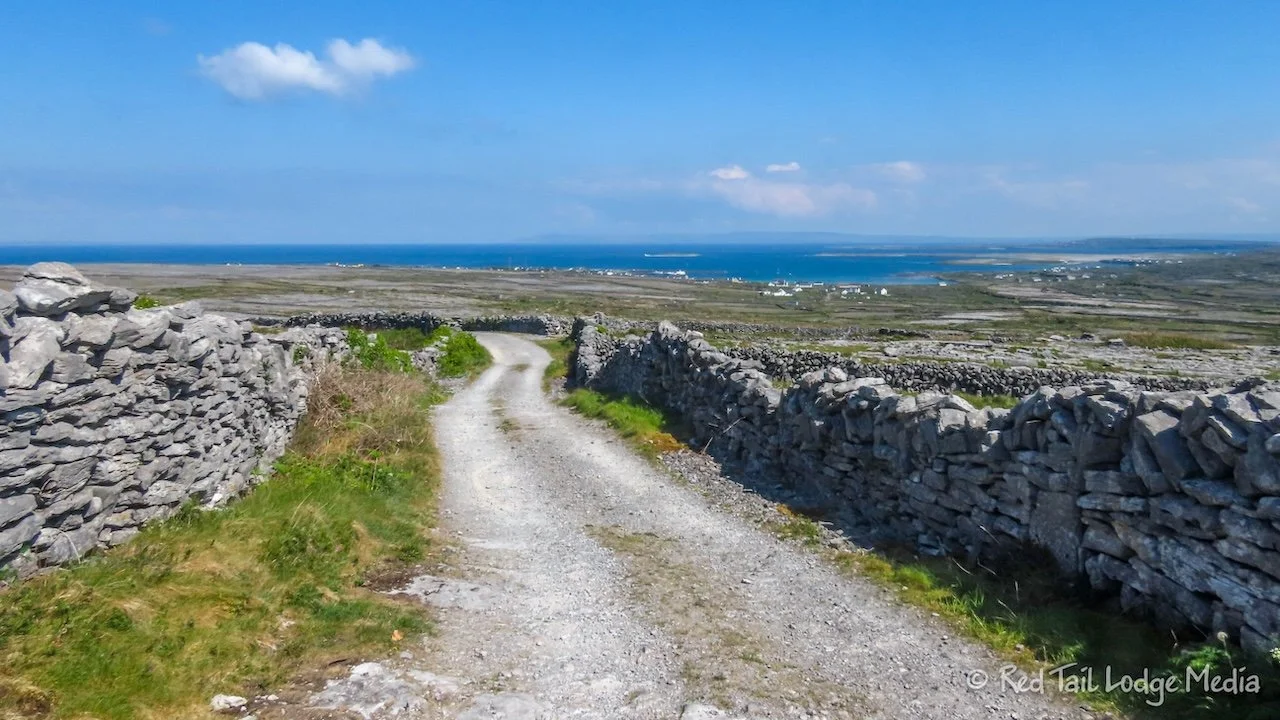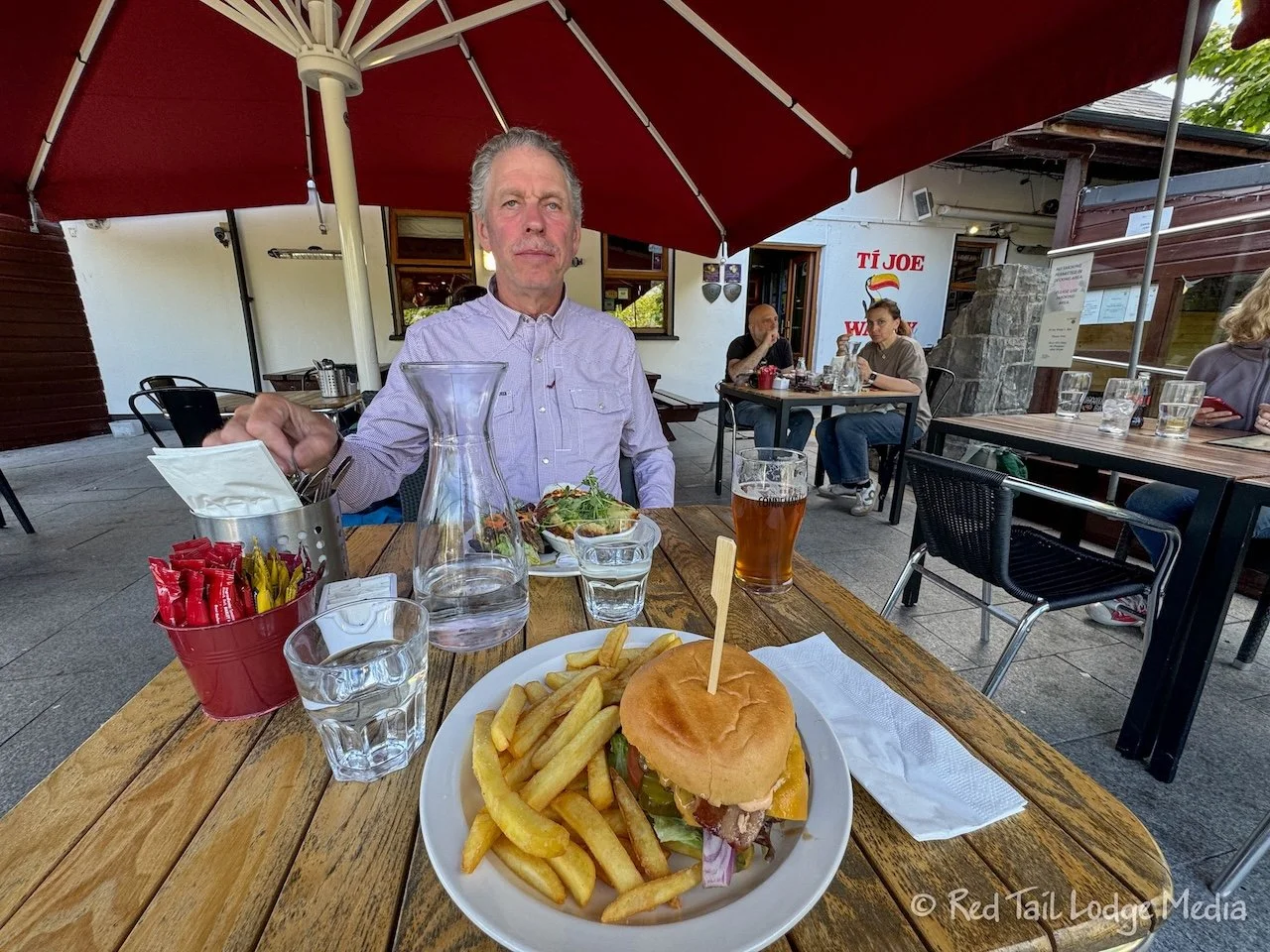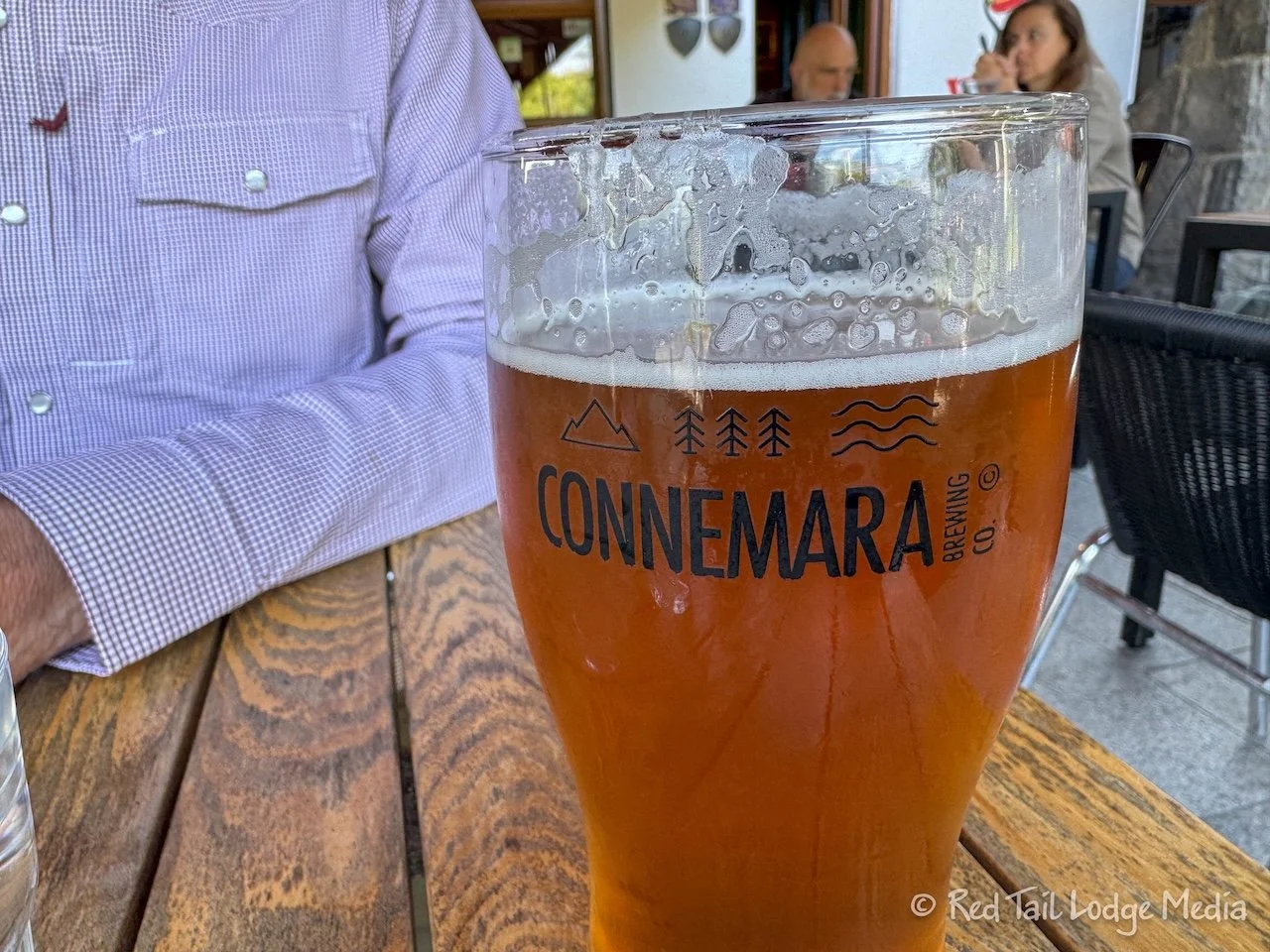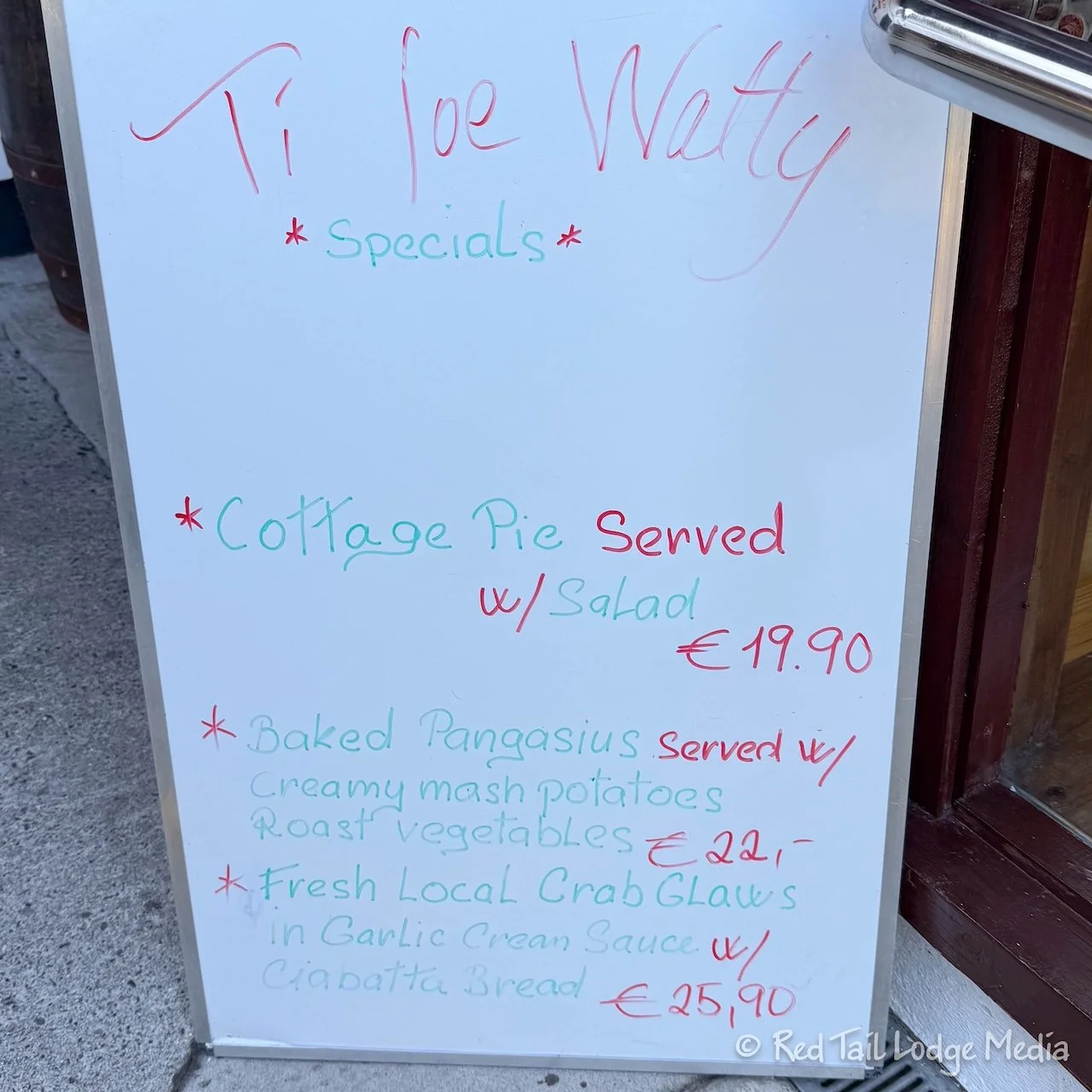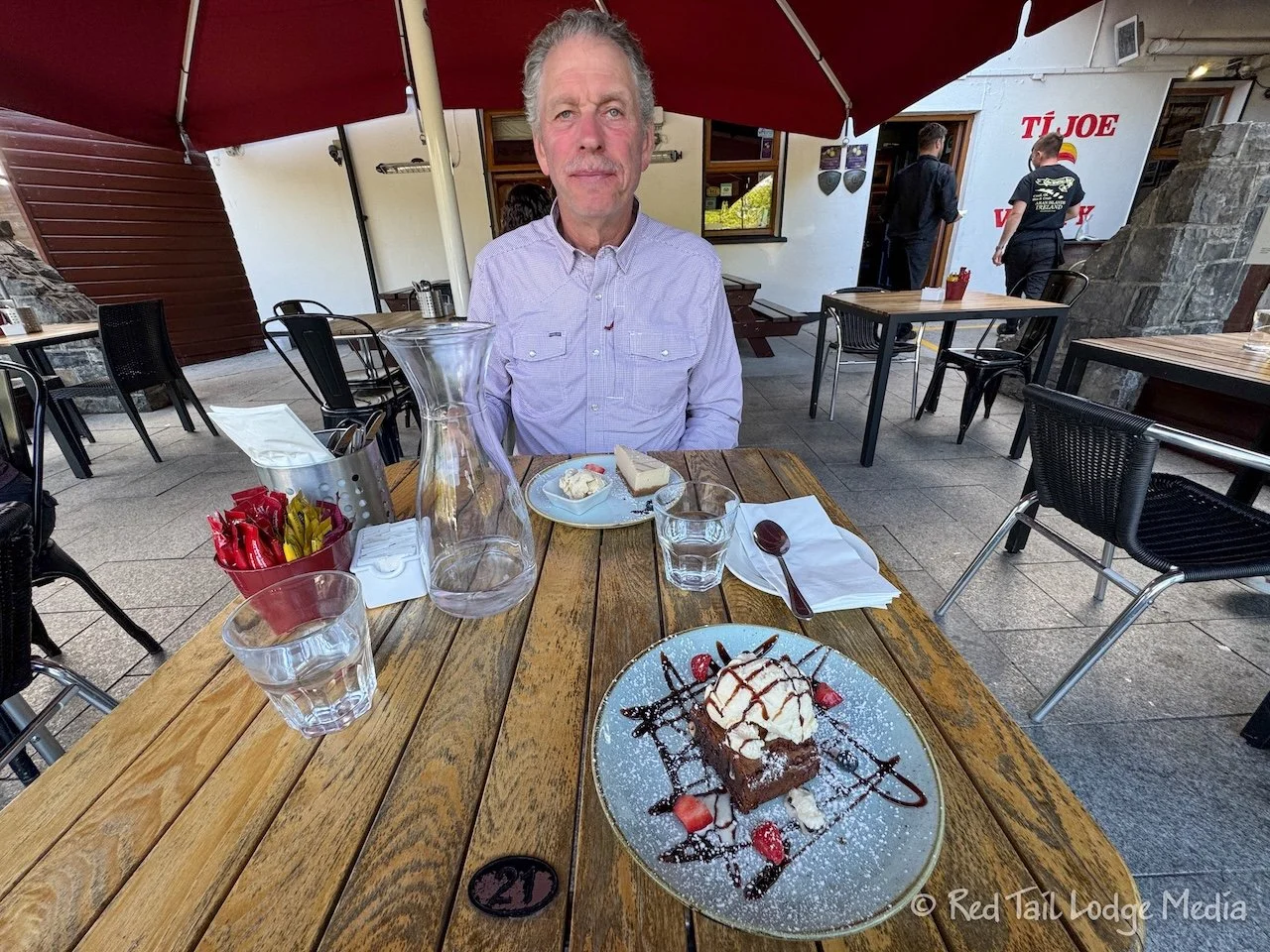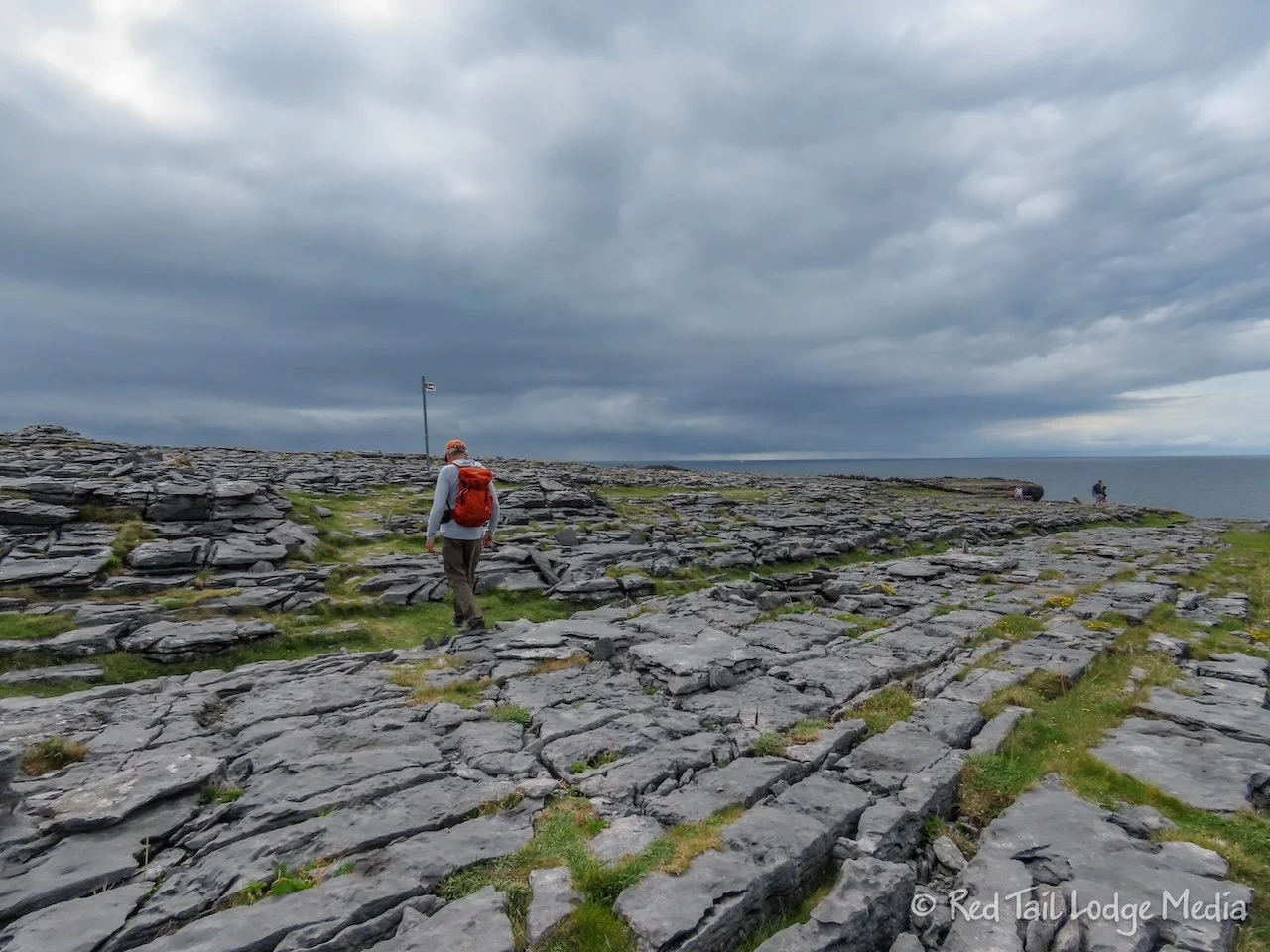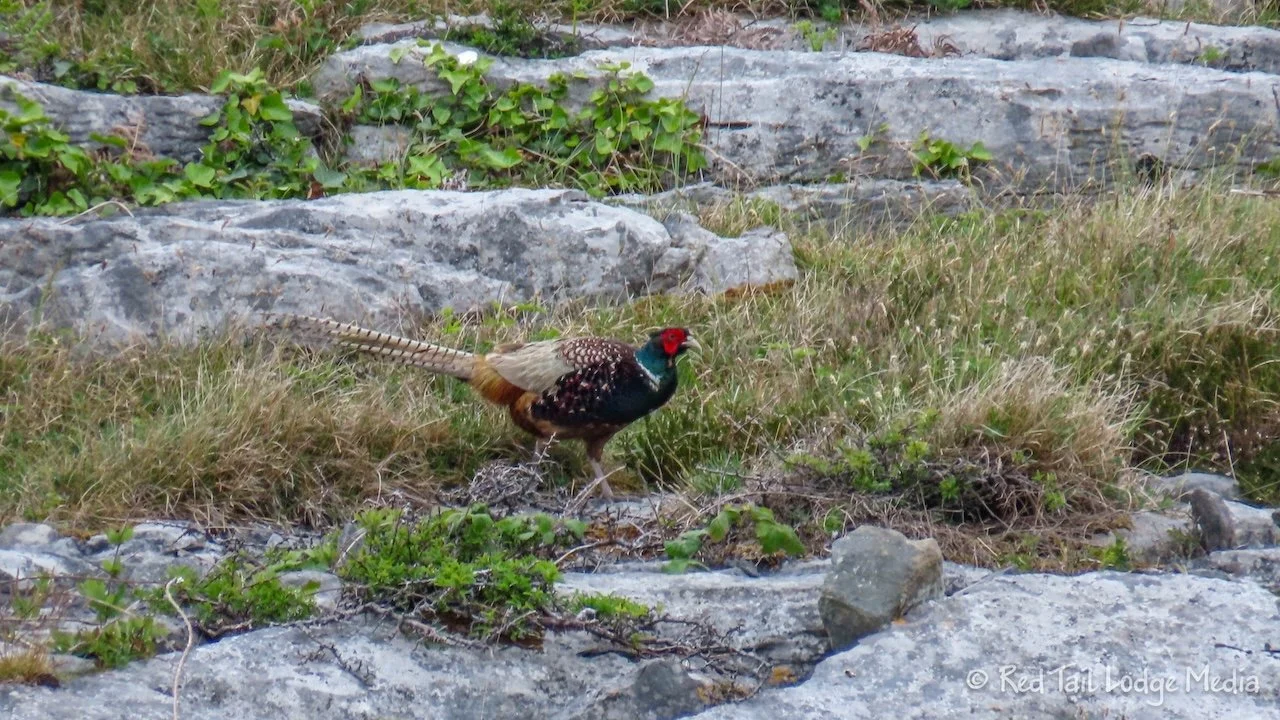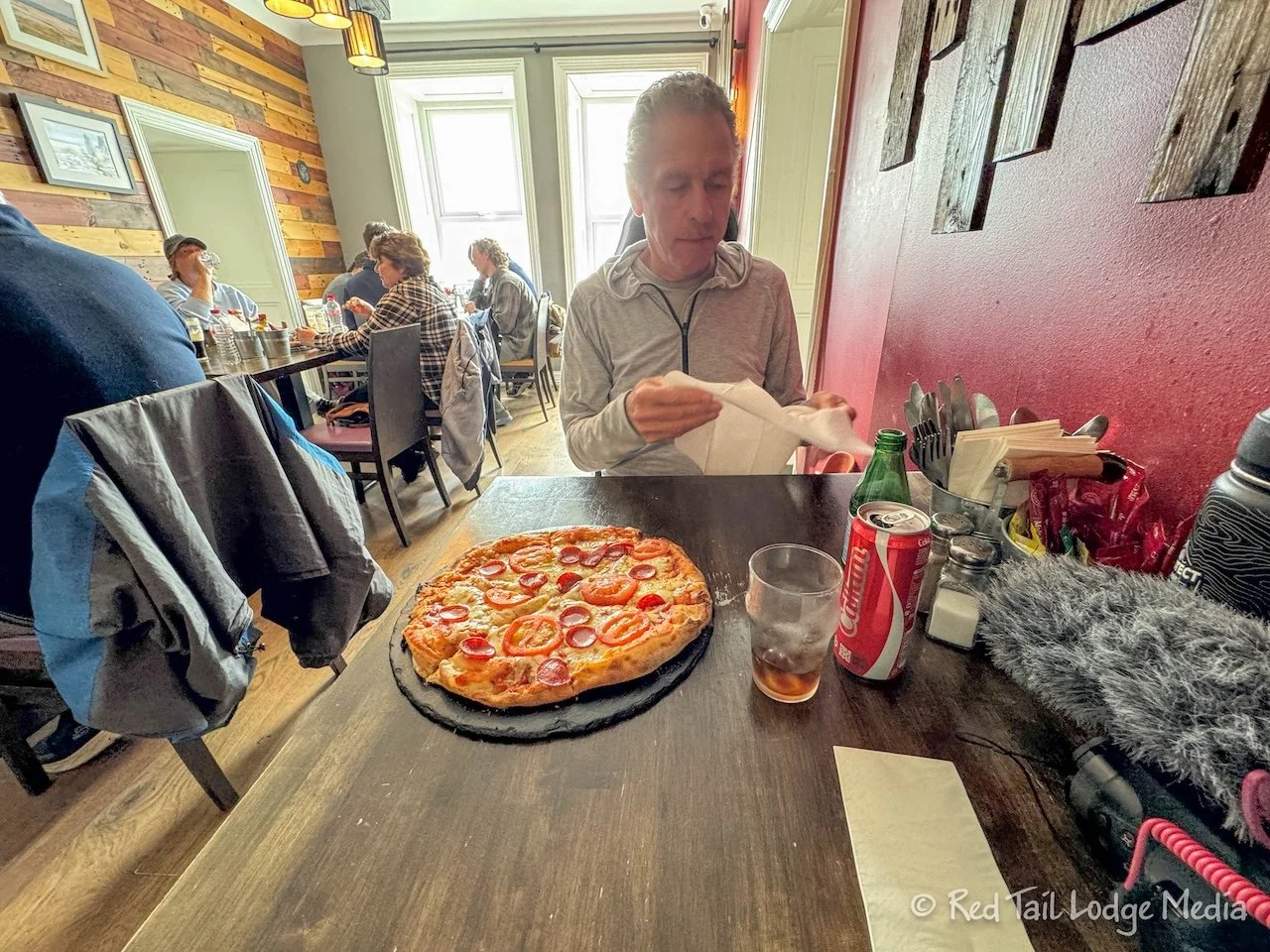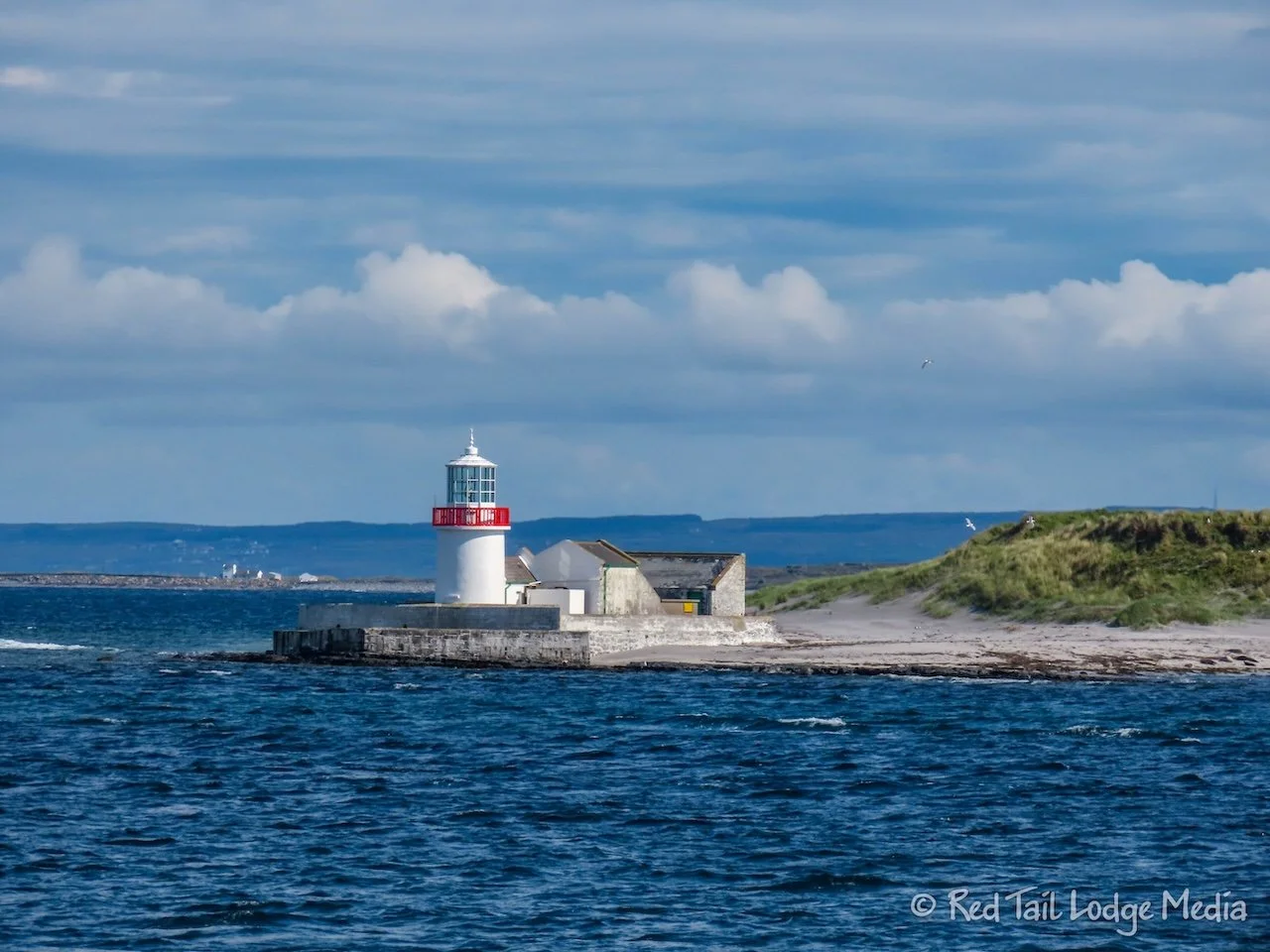Inishmore, Ireland - May 10th to 11th, 2025
Inishmore is the largest of the three Aran Islands, off the west coast of Ireland. It can be reached by ferry, from either Galway on the north side of Galway Bay or from Doolin to the south. We chose to take the ferry from Doolin and spend one night on the island so we could have more time to explore.
Saturday we took the Doolin Ferry to the island of Inishmore. We had booked the 9 am ferry, but managed to squeeze in a quick breakfast at the Doolin Inn before checking out.
After checking out, we drove down to the pier. We were happy to find out that we could pay 9 euros for parking that would be valid until 10:30 pm the following day. All of the information we had so far led us to believe we had to pay 15 euros which would be for anything over 30 hours and up to one week. It’s nice when something is a little cheaper than expected, as usually it is the other way around.
The ferry took about 45 to 50 minutes to reach the town of Kilronan on Inishmore. A few people on the other side of the boat saw a dolphin, but we missed it. The ride goes by the other two Aran Islands, Inisheer and Inishmaan, before reaching the port at Inishmore.
As we got off the boat, we walked past all the people trying to get us to take a van tour, a guided tour, or a horse and buggy (pony & trap) tour of the island. There were also hop on-hop off vans. We had rented e-bikes for the day. Believe it or not, it was another warm, sunny day in Ireland, so riding bikes seemed like the nicest option. However, renting e-bikes was probably more expensive than some of the van tours. Had it been a cold, rainy day, we probably would have chosen a van tour.
Right at the end of the pier is Pier House B&B, where we had reservations for the night. We managed to fit everything we needed for the one night into our daypacks, but it was nice to unload some of it and leave it at the B&B for the day. Fortunately, even though it was around 10 am, our room was ready, so we could put our extra gear in our room. However, the B&B would have held our luggage for us had our room not been ready.
Right next door to the B&B is the Aran Bike Hire. We had reserved two e-bikes online with them. So we walked over and picked up our bikes. They were due back at 5 pm. That gave us most of the day to explore the island. There are several different bike hires near the pier, but the map that Doolin Ferry had given us a couple of days before had information about the Aran Bike Hire, so that’s who we went with.
We started out on the Green Route as marked on the map, which took us along the north side of the island and over to Kilmurvey Beach. Along the way, we stopped to check out the colony of gray seals basking in the sun along the shore.
At the beach, we followed the signs to Dún Aonghasa, the main attraction on the island. It is a ring fort situated on top of sheer cliffs. It is believed that most of the structures of the fort date back to the Bronze Age (2000 BC to 500 BC) and the Iron Age (500 BC to 400 AD). It looked like buttresses had been added to the fort walls in recent times to stabilize the walls.
You cannot ride a bike all the way to the fort. There is a bike park to leave your bike and a walking trail from there leads you up to the fort. It is about a 15 minute hike up to the fort.
The views from the fort are spectacular, with ocean waves crashing at the base of the 100 meter (330 feet) cliffs below you.
Outside the third ring of walls, we noticed a field of jumbled, vertical, spiky stones. It was a human creation called a cheval de frise, used for defensive purposes. We can’t imagine how much effort that would have taken to move all those stones to create that.
At the trailhead to the fort, there are several food trucks and a café called Teach Nan Phaidi. We opted to have lunch at one of the food trucks, called Jack’s. Ann had the pulled pork with coleslaw while Keith had the chicken burger. Not the most Irish of food, but it’s what sounded good to us at the time.
From there, we rode over to the Na Seacht dTeampaill (the Seven Churches). A graveyard, which is still in use, surrounds the ruins of seven buildings. Some of the buildings date back to the 10th century. Despite the name, only two of the seven buildings were actually churches. In the graveyard are some high crosses that date back to the 11th century.
We rode back to Kilmurvey Beach, then took the road that follows along the south side of the island, heading back toward the port. This road is not paved all the way and is a little rough and sketchy in places for the types of bikes we had. We were searching for the path over to the Poll na bPéist (The Wormhole).
We reached a trailhead where a bunch of bikes were parked. There were no signs, but we figured that it must be the trail. It turns out, we could have continued further down the unpaved road and gotten closer before walking, but we enjoyed the extra walk.
The Poll na bPéist is a natural occurring perfect rectangular shaped blow hole along the cliffs, just like a swimming pool. The Red Bull Cliff Diving World Series was held at the Wormhole in 2014 & 2017. Almost as interesting as the wormhole itself was the hike to get there. After following the trail lined on each side by a rock wall, leading us through the patchwork of stone walls enclosing the pastures, we reached the real trailhead.
From the trailhead, there are signs and red arrows painted on the rocks leading the way. At this point, you need to start watching your feet, as you cross the limestone pavement with lots of cracks, crevices, and loose stones. Then the trail heads out on a rocky shelf about halfway down the cliff face. The rocky shelf also takes your concentration to walk across, as it is an uneven surface with small tidal pools. The waves of the ocean are crashing up against the cliffs below you.
When you reach the wormhole, you can sit there and watch the wave action of the water inside the wormhole. It looks so much like a swimming pool, that the scene reminded us of the pools on the Sky Princess, when the water sloshed around in them during some rough days at sea (Transatlantic Cruise: Part 2 of 2 - March 16th to 24th, 2025).
Once we returned to our bikes, we continued on the road back to town. The road was sometimes paved and sometimes rough. There was one steep hill, where Ann’s electric motor could not cope, so she hopped off her bike and walked it up to the top. Going downhill on the rough road was scarier and we just hoped our brakes would hold.
We returned our bikes around 3:30 pm, well before the 5 pm deadline. After relaxing in our room for a little bit, we walked up the road to Joe Watty’s Pub and Seafood Bar (Tí Joe Watty). By this time of day, the island was pretty quiet, as the last ferry back to the mainland had already left. Joe Watty’s had a nice, calm atmosphere, very inviting.
Since it was still nice outside, we sat out on the patio. Ann ordered the hamburger with chips (fries) while Keith ordered one of the daily specials, cottage pie. The pie contained ground beef and vegetables, with a topping of mashed potatoes that was then baked. To wash down the pie, Keith drank a Connemara Ale from Galway.
While we were sitting on the patio, we witnessed a woman on a bike take a tumble. It looked like she braked with the front brake instead of the back brake. We thought she didn’t know better, since in England and Ireland, the left hand brake is for the rear brake instead of the right hand brake like in the States. But then we noticed that she didn’t have a left hand, so she didn’t have a choice of which brake to use. Being able to easily swap the hand brakes seems like it would be a useful feature on a bike. We’re not sure anything like that exists.
We’ve noticed that many restaurants in England and Ireland write their daily specials and desserts on a board instead of printing menus. Restaurants in the States do that as well, but the boards are usually permanently mounted to a wall or only at the entrance to the restaurant. Over here, the boards are portable, and the wait staff will usually bring the board over to a table or group of tables for their customers to read.
For dessert, Keith ordered the Biscoff cheesecake with salted caramel ice cream while Ann had the hazelnut brownie with ice cream. Biscoff is a brand of biscuits (cookies) from Belgium, which have a distinctive flavor. Biscoff cheesecake is usually made with not only the Biscoff cookies, but also their Biscoff spread.
Ann found the brownie very satisfying. Not only was the brownie dense and chewy like an American brownie should be, there was a nice ratio between the brownie and the ice cream. It was the first time this season that Ann’s found a brownie that she likes.
Cloudy skies and a drizzle of rain greeted us Sunday morning. We had a relaxing morning before checking out of the B&B after a leisurely breakfast.
Ann’s socks didn’t completely dry overnight, so she used the hair dryer to finish the work. She doesn’t like using hair dryers, since they use so much power. She never blow dries her hair. Ann noticed that the hair dryers in Ireland seem to use less power, don’t get quite as hot and are much quieter than ones she’s used in the States. Perhaps the ones in the States have changed as well, because it has been decades since she’s used one.
The heated towel bars in the bathrooms don’t seem to be as popular in Ireland as they were during our stay in England. However, the hot water radiators seem to be everywhere. We’ve used them quite a bit for drying out our hand wash. Unfortunately, they are not always on. There is a dial on them to adjust the temperature, but the main boiler for the system, wherever that may be, is not turned on all the time, if at all. Perhaps it is controlled by a thermostat somewhere. Even when the radiators don’t come on, our hand wash usually dries over night. Our hiking socks are usually the last to dry, as they are thicker material than the rest of our clothing.
Our ferry back to Doolin was not until 4:15 pm. When we checked out of the B&B, we left some of our gear stored at the B&B so we wouldn’t have to lug it around all day. We had a small nylon shopping bag that we put all the things we didn’t need for the day and tied it shut.
By 11 am, the rain had stopped and the sun kept trying to peek out from the clouds. We hiked up to Dún Dúchathair (Black Fort). It was a road walk most of the way there. The road started out as paved, then turned to gravel, then to rocks and dirt.
From the end of the road, there was a marked trail. Well, it was sort of a trail. The signs headed out over the limestone rocks, so you had to make your own way from one sign to the next, making sure you didn’t twist an ankle on the uneven rocks, cracks, and crevices. It definitely gave our ankles and knees a workout.
The fort is perched on the edge of a cliff, similar to Dún Aonghasa, but smaller and slightly less dramatic. However, we found the fort itself prettier, surrounded by a carpet of flowers that haven’t been trampled by visitors. And there are less people around, as most people only visit Dún Aonghasa.
Along the way to the fort, we spotted a pheasant. Back in England, we saw quite a few pheasants, but this was the first one we’ve seen in Ireland. It was a nice added bonus to the hike.
By the time we returned to town, we had gone 6.6 kilometers (3.1 miles) with an elevation gain of 102 meters (335 feet) which we completed in two hours. We counted it as hike number 15 of our 52 Hike Challenge for 2025.
Back in the town of Kilronan, we went to the Bayview Restaurant for lunch. We split a margherita pizza with pepperoni and tomatoes. The pizza was delicious.
Since we had a light lunch, we decided to have dessert over at the Aran Islands Café. It is a food truck with tables outside. It was a little cool and breezy, but our jackets and two chai lattes kept us comfortable while we ate our raspberry scone and lemon muffin.
After our treats, we walked back to the Pier House, picked up our gear, and hung out inside in their lounge until it was time to catch our ferry.
As we sailed past the lighthouse in the bay, we could see seals lying on the beach next to it.
The ferry stopped at Inisheer (Inis Oírr), one of the other Aran Islands, to take on more passengers before returning to Doolin. It looked like a Gaelic handball team boarded our boat at Inisheer. Gaelic handball is similar to American handball (and raquetball). Players hit the ball with their hands against a wall. A competition can be singles (two opponents on the court) or doubles (two teams of two players).
Inishmore was small enough to explore by bike and on foot in a day or two, with an interesting landscape of limestone pavement, rocky cliffs, and animal pastures. Ancient stone forts and seals basking in the sun made for interesting destinations. And spending the night on the island allowed us to enjoy some time without the crowds of tourists.
Check out our related video: Inishmore, Ireland
(Ann)

